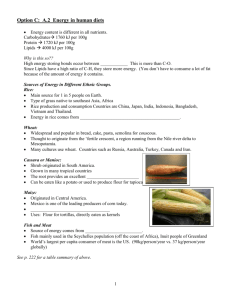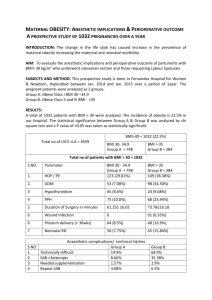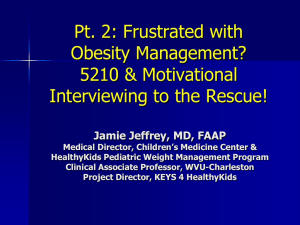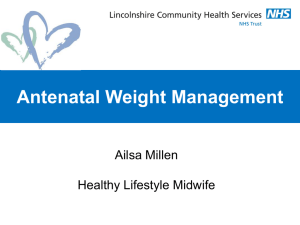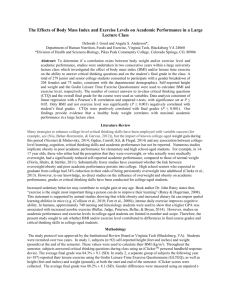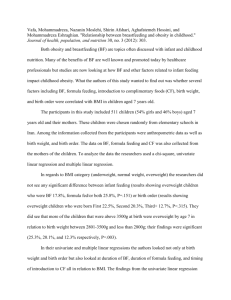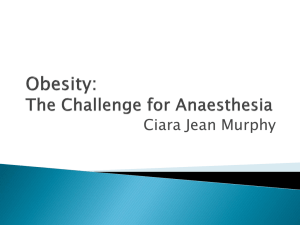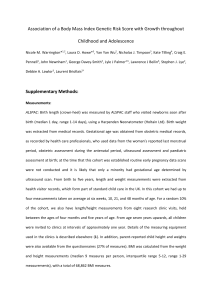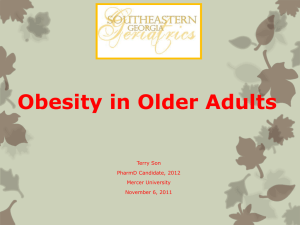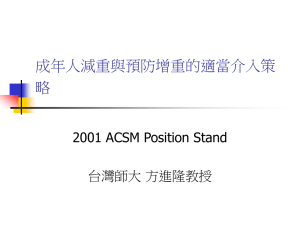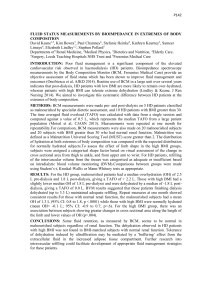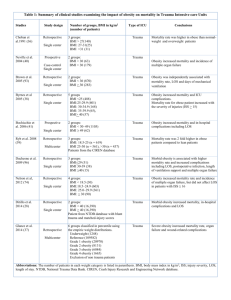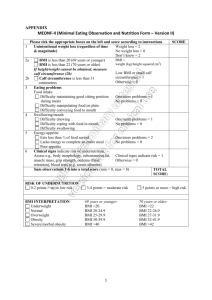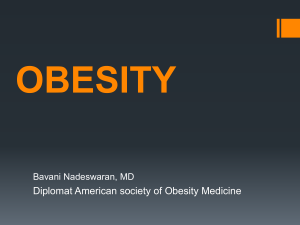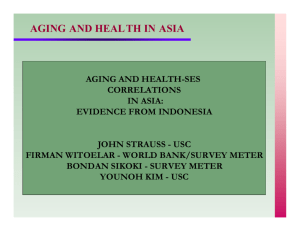Diet and Exercise Counseling in Primary Care
advertisement
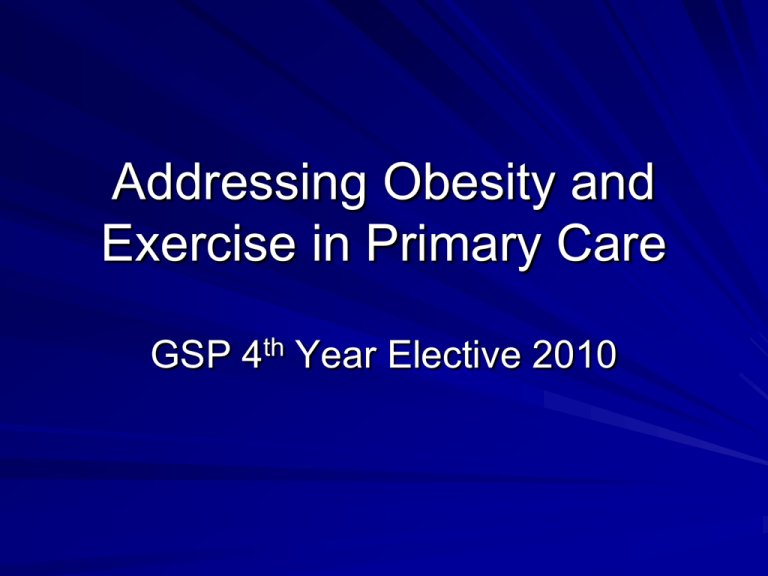
Addressing Obesity and Exercise in Primary Care GSP 4th Year Elective 2010 Definitions of Overweight and Obesity BMI = weight in kg/height in meters2 (weight in lb/height in inches2)*703 Overweight- BMI 25-29.9 Obesity- BMI > 30 Extreme obesity- BMI > 40 Waist Circumference Increases risk when increased with BMI 25-35 – Men >102 cm (40 in) – Women > 88 cm (35 in) Prevalence of Overweight and Obesity 1990 – Overweight- 55.9% – Obesity- 22.9% 2000 – Overweight-64.5% – Obesity- 30.5% Associated Risk Factors Diabetes Hypertension High cholesterol Asthma Arthritis Obstructive sleep apnea Poor health status Health Burden Second leading cause of premature mortality after smoking 300-400,000 deaths per year Benefits of weight loss Little evidence that interventions reduce morbidity or mortality Weight loss does improve glucose control, lipid levels and blood pressure Goals of weight loss and management Prevent further weight gain Reduce body weight Maintain lower body weight long-term Weight loss guidelines Reasonable goal- 10% decrease in weight over 6 months Requires a decrease of 300-500 calories per day up to BMI of 35 Requires a decrease of 500-1000 calories per day for BMI > 35 Weight loss will usually plateau after 6 months Maintenance is difficult Sedentary Lifestyle Independent risk factor for cardiovascular and all cause mortality Hypertension, insulin resistance, elevated glucose and dyslipidemia all improve with exercise Physical Activity 30 minutes on most days recommended For most individuals, will not produce significant weight loss alone Walking briskly for 30-45 minutes will consume 100-200 calories Target heart rate: (220-age)*0.6 to 0.9 USPSTF Recommends clinicians screen all adult patients for obesity and offer intensive counseling and behavioral interventions to promote weight loss for obese adults Found insufficient evidence to determine whether counseling patients to promote physical activity leads to increased physical activity in adults Medications May consider if diet and exercise not successful Should have BMI> 30 or >27 with risk factors Consider stopping if < 2 kg weight loss after 4 weeks Long-term effectiveness uncertain and many patients discontinue Sibutramine Blocks reuptake of norepinephrine and serotonin Side effects include increased blood pressure, heart rate, headache, insomnia, dry mouth Should not be used for patients with uncontrolled hypertension or significant cardiovascular disease Dose- 10-15 mg/day Effectiveness- average weight loss 5% Orlistat Lipase inhibitor Side effects include loose and more frequent stools Dose- 120 mg tid Effectiveness- average weight loss 5% Combined therapy no more effective, weight loss limited to 10% Weight loss surgery Very successful in some patients Gastric bypass used at UVA Indications- unsuccessful medical weight loss with BMI > 40 or BMI > 35 with complications Five A’s Ask- BMI as a vital sign Advise- provide brief feedback Assess- motivation and stage of change Assist- help patients who wish to lose weight develop a plan Arrange follow-up Dietary counseling for other conditions Elevated cholesterol Cardiovascular disease Hypertension Diabetes Mediterranean Diet Only diet shown to decrease cardiovascular morbidity and mortality RR 0.3-0.5 vs regular or “heart-healthy diet” (30% fat, 10% saturated fat, 300 g cholesterol/d) 250-300 g fruit, 125-150 g vegetables, 25-50 g nuts/day 400-500 g whole grains, legumes, rice/d +/- fish several times a week 3-4 servings of monounsaturated fat/d References CLINICAL GUIDELINES ON THE IDENTIFICATION, EVALUATION, AND TREATMENT OF OVERWEIGHT AND OBESITY IN ADULTS – http://www.nhlbi.nih.gov/guidelines/obesity/ob_gdlns.pdf US PREVENTIVE SERVICES TASK FORCE – http://www.ahcpr.gov/clinic/uspstfix.htm MEDITERRANEAN DIET – Circulation 1999;99:779


